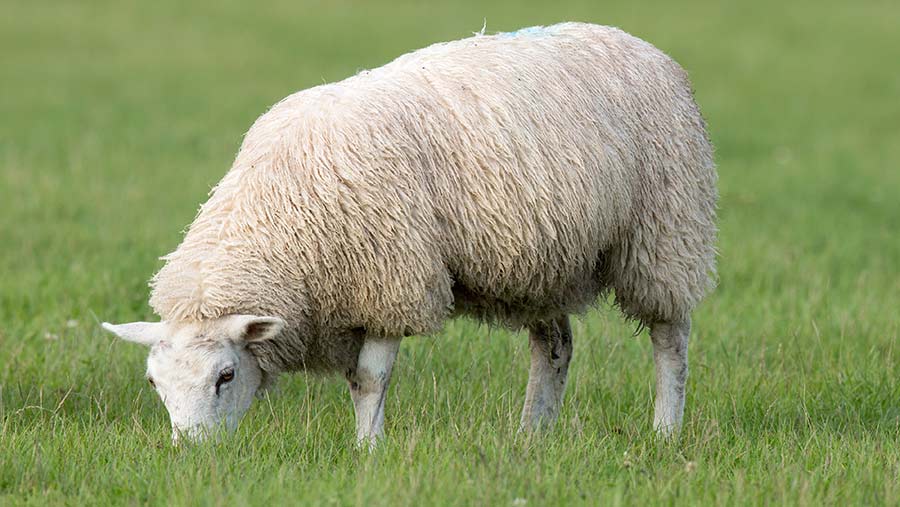How multi-species swards can increase grassland production
 © Tim Scrivener
© Tim Scrivener Perennial ryegrass (PRG) leys have many benefits, such as high sugar levels and easy establishment, however there are drawbacks.
Because of the shallow roots, in drought conditions, yield can really suffer and farmers often have to rely on nitrogen fertilisers for optimum production.
There are also issues in PRG-only leys with a lack of nutritional content – such as iodine and selenium – meaning additional supplements are also needed.
Multi-species swards are an alternative solution that is growing in popularity.
Below, Deborah Beaumont, ecologist at Rothamsted Research, highlights some of the benefits of multi-species swards and what type of species can be used to rectify specific situations.
See also: Advice for rejuvenating grassland if reseeds failed during the drought
What are the benefits?
- Opportunities for an extended grazing season
If you have more species in your sward, there will be a greater variation in terms of maturity dates, so stock can be kept out for longer due to the increased availability.
It also helps to keep production even throughout the season.
PRG is often front loaded – doing well at the beginning of the season and thinning out towards the end.
- Increased productivity through complementary mixtures of species
If you have a mixture of species that tap into different parts of the soil profile and nutrient sources, there will be an increased benefit in terms of sward productivity.
- More consistent production during periods of climatic stress – for example, flood drought
Because of the increased rooting depth, some multi-species swards can be more resilient in extreme events. In a drought situation, as seen last summer, multi-species swards consistently outperformed PRG swards.
- A natural source of bioavailable micronutrients
The deep-rooting properties also mean that multi-species swards have a greater chance of tapping into nutrient sources locked within the soil.
- Improved soil quality and carbon sequestration
Because of the organic matter returns from these different species, soil quality is often improved due to the increased number of microbes.
With improved quality also comes structural advantages due to the root systems creating more channels for water and air to pass through the soil.
- Reduced artificial nitrogen requirement
Including multi-species can lower nitrogen requirements, which can benefit both environmental and cost implications.
- Enhanced parasite control
Some species, such as Birdsfoot Trefoil and Sainfoin, have condensed tannins in them, which can reduce the amount of parasitic worms that are found in sheep and cattle.
Chicory has also proven to reduce worm burdens.
- Enhanced biodiversity above and below ground
The more species within the sward, the greater the biodiversity above and below ground – something that could become more important as future subsidy schemes look to be more environmentally focused.
How can I use them?
1. I want to… spend less on fertiliser and am worried about the environmental impact they have.
Solution: Legumes such as white clover fix nitrogen in the soil, reducing the need for chemical fertiliser.
2. I want to… relieve compaction without relying on machinery
Solution: Species such as yarrow, chicory or sainfoin which are deep rooting, could improve the soil structure and increase water infiltration
3. I want to… reduce my worm burden to improve animal health and decrease costs
Solution: Birdsfoot trefoil, sainfoin and chicory boast condensed tannins which are effectively natural wormers.
4. I want to… increase the resilience of my soil against events such as droughts
Solution: Species such as sainfoin have increased root systems which can tap into deeper water sources in times of drought.
5. I want to… reduce my herbicide expenditure
Solution: Weed loading can be reduced by including a broad mixture of species.
6. I want to… reduce my supplement costs
Solution: Mixing species such as red and white clover, sainfoin, chicory and yarrow will boost the mineral availability within swards and minimise the need for additional supplements.
